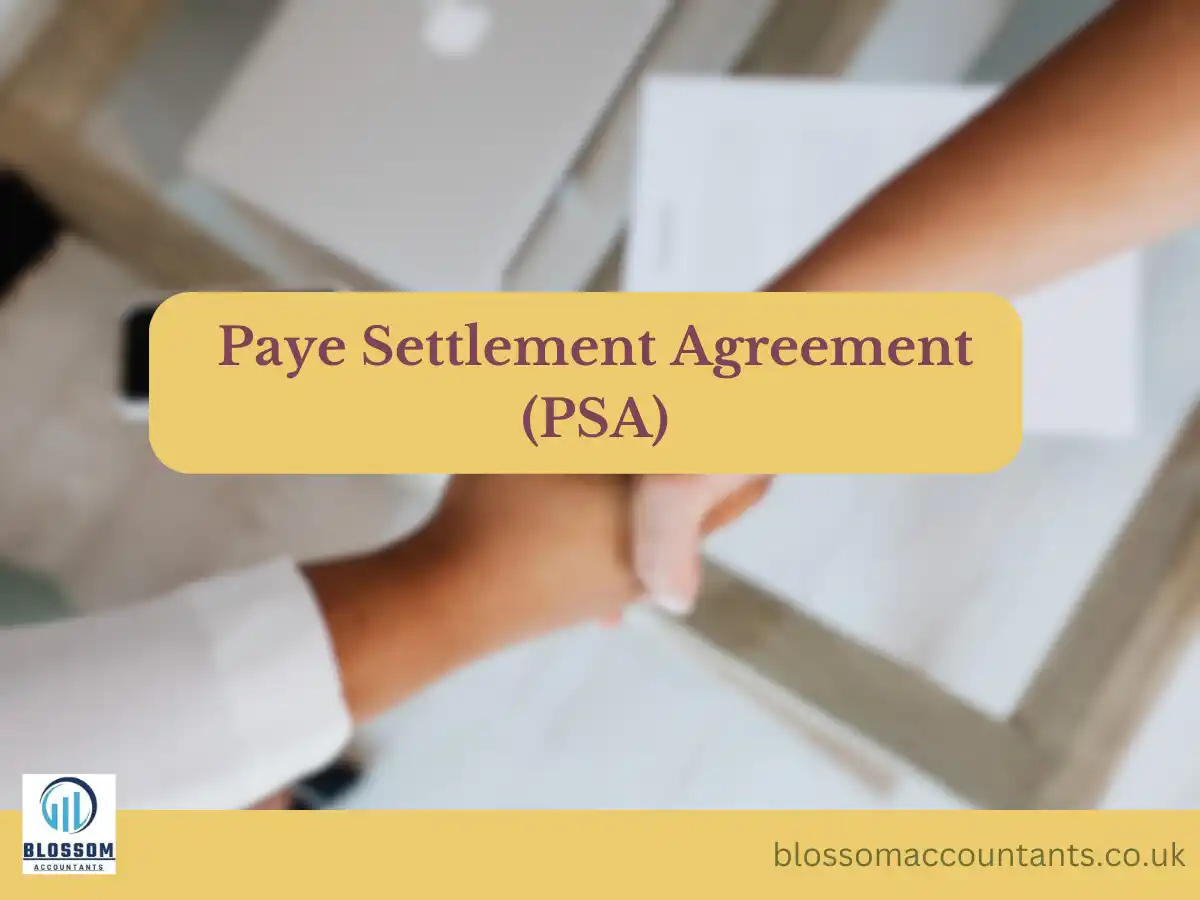The Pay As You Earn (PAYE) Settlement Agreement (PSA) is a special arrangement provided by HM Revenue and Customs (HMRC) in the United Kingdom. It allows employers to pay tax and National Insurance contributions on behalf of their employees for certain taxable benefits and expenses.
This article explores the concept of a Paye Settlement Agreement in detail, including its purpose, eligibility, benefits, and the process involved in setting up and maintaining a PSA.
Table of Contents
What is a Paye Settlement Agreement (PSA)?
A Paye Settlement Agreement (PSA) is an agreement between an employer and HMRC that allows the employer to pay tax and National Insurance contributions (NICs) on behalf of their employees for certain taxable benefits and expenses. Instead of reporting these benefits on individual employees’ P11D forms, the employer settles the tax liability collectively through the PSA.
What is the Purpose of a Paye Settlement Agreement?
The purpose of a Paye Settlement Agreement is to simplify the reporting and payment process for certain benefits and expenses provided by an employer to its employees. It eliminates the need for employees to report taxable benefits on their personal tax returns, reducing administrative burden for both the employer and the employee.
Who is Eligible for a Paye Settlement Agreement?
Employers can apply for a Paye Settlement Agreement if they provide taxable benefits or incur expenses on behalf of their employees. However, not all benefits and expenses are eligible for inclusion in a PSA. HMRC has specific guidelines regarding which benefits can be included.

What are the Benefits of Having a Paye Settlement Agreement?
Having a Paye Settlement Agreement offers several benefits, including:
Administrative Simplicity:
Employers no longer need to report individual benefits on P11D forms, simplifying the reporting process.
Tax Certainty:
Once a PSA is in place, the employer pays the tax and NICs on behalf of the employees, ensuring that the tax responsibilities connected with the included perks and costs are predictable.
Reduced Employee Tax Liability:
Employees are exempt from including perks in their personal tax returns, potentially lowering their tax liabilities.
How to Set Up a Paye Settlement Agreement?
To set up a Paye Settlement Agreement, employers need to follow these steps:
Identify Eligible Benefits:
Based on HMRC criteria, determine whether perks and costs are qualified for inclusion in the PSA.
Apply to HMRC:
Fill out the appropriate application form (often Form PSA1) and submit it to HMRC for approval.
Agree on Terms:
HMRC will review the application and may request additional information. Once approved, HMRC will issue a letter of agreement outlining the terms of the PSA.
Calculate and Pay Tax:
At the end of the tax year, the employer calculates the tax and NICs due based on the agreed-upon rates and pays the amount to HMRC.
What is the Process for Maintaining a Paye Settlement Agreement?
To maintain a Paye Settlement Agreement, employers should:
Keep Accurate Records:
Maintain detailed records of the benefits and expenses included in the PSA, as well as the calculations and payments made.
Review and Renew:
Regularly review the PSA to ensure it remains relevant and update HMRC if any changes occur.
Report Excluded Items:
Continue to report any benefits or expenses not covered by the PSA on P11D forms.
Also read: HMRC P32 Form

Are There any Disadvantages or Limitations of a Paye Settlement Agreement?
While a Paye Settlement Agreement offers many advantages, it is important to consider potential limitations or disadvantages, such as:
Limited Eligibility:
Not all benefits and expenses can be included in a PSA. HMRC has specific guidelines regarding eligible items.
Complexity:
The process of setting up and maintaining a PSA can be complex, requiring accurate calculations and adherence to HMRC guidelines.
Additional Costs:
There may be additional costs associated with seeking professional advice or assistance in setting up and maintaining a PSA.
Can a Paye Settlement Agreement be Ended or Modified?
A Paye Settlement Agreement can be terminated or amended. Employers must notify HMRC if they desire to discontinue or modify the arrangement. HMRC will offer instructions on how to proceed.
Seeking Professional Advice:
When considering a Paye Settlement Agreement, it is best to get expert assistance from accountants or tax consultants because to the complexities and potential tax ramifications. These experts may advise employers on eligibility, compliance, and the overall impact of a PSA on their tax situation.
Conclusion Paye Settlement Agreement :
A Paye Settlement Agreement is a valuable arrangement that simplifies the reporting and payment process for certain benefits and expenses provided by employers to their employees. It offers administrative simplicity, tax certainty, and reduced employee tax liabilities. Employers considering a Paye Settlement Agreement should carefully assess eligibility, understand the process of setting up and maintaining a PSA, and seek professional advice to ensure compliance with HMRC guidelines and maximize the benefits of this arrangement.
DISCLAIMER: We have written the UK accounting and tax related details for your information only. For professional advice or for any accounting task you require, you may need to speak to a professional accountant near you who can assist you. Please read our disclaimer for more details.

